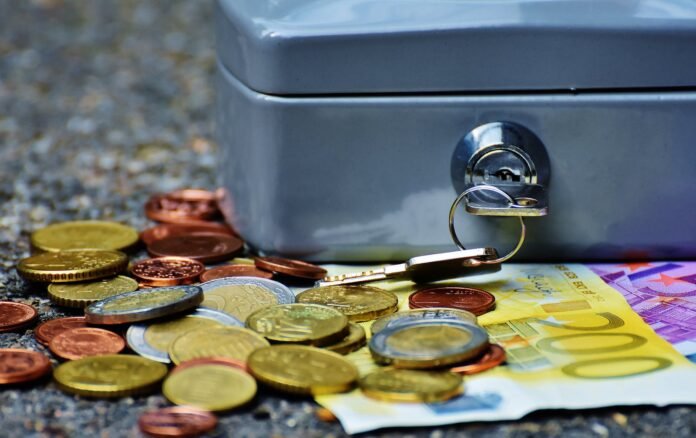Do you use an ATM regularly for your banking needs? If so, you’re among a majority of people who depend on the convenience of ATMs for their financial transactions. However, in addition to the convenience, you may also be subject to various types of fees and have concerns about safety. This article will explain the ins and outs of ATM usage, including how to minimize fees and ensure safety.
1) Mastering ATM Friendliness: Mitigating Fees and Keeping Safe
At first glance, using an ATM may seem intimidating, but once you learn the basics of fee mitigation and safety, using the ATM to get cash should be a breeze. Here are some of the ways you can make sure you’re a master of using ATMs.
Mitigating Fees:
- Know which ATMs don’t charge a fee. Some banks won’t charge you a fee if you use an ATM within their network and some may even reimburse ATM charges incurred outside their network.
- Be mindful of the cost of withdrawing from an ATM in a different country if you’re travelling internationally.
- Check what other banks in your area offer and see if any of them will cover ATM fees.
Keeping Safe:
- Make sure there’s no one lurking in the area or behind you before you start using an ATM.
- Ensure you are familiar with your own bank’s and the ATM’s website before entering your PIN as certain ATMs can look different and may have different security features.
- Ensure all transactions are complete before leaving the machine.
- If you see or feel anything suspicious, cancel the transaction and walk away.
- If you think someone might be looking over your shoulder, move to an area away from the machine where you can complete your transaction securely.
With these tips, you can be sure that you’re using the ATM properly and with the right security measures in place. With a little practice and preparation, you’ll be a pro at using ATMs in no time.
2) All That Glitters Isn’t Free: Knowing the Cost of ATM Transactions
Most people are accustomed to making everyday transactions at a bank’s Automated Teller Machine (ATM). These transactions allow us to access cash and complete easy financial transactions like transferring funds or check balances. It’s become so common that the cost of it is often overlooked.
Using ATMs does come at a cost – a cost that is not always visible. Banks typically list the cost of ATM transactions on their monthly statements. It could sometimes be as low as $1. Some banks even charge $2 per ATM transaction. So if you’re making frequent visits to the ATM, these can add up quickly.
The cost of ATM transactions also depends on the type of transactions you make. Basic transactions like deposits, withdrawals, or checking balances may come with a lower fee than more complex ones like transferring funds. Also, the fee may differ depending on the type of bank or credit union you use. Some banks may also charge a transaction fee for using ATMs outside their network.
When researching the cost of ATM transactions on your own, there are some tips to keep in mind:
- Check if there’s an ATM fee schedule on the bank’s website
- Ask about any fees associated with using non-network ATMs
- Understand the different types of fees – international, interbank, etc.
- Talk to the bank’s customer service and inquire about restrictions with ATM use
When it comes to ATM transactions, ask questions and read the fine print to determine the best way to manage your finances. Understanding the costs associated with ATM transactions will help you save money in the long run.
3) Making the Most of ATM Technology: Knowing How and When to Use ATM Services
Look beneath the Surface
It’s easy to take ATMs for granted. They’re everywhere and you know how to use them. But unless you’ve done the research, you are likely missing out on some extra features and services that ATMs can offer. Most ATMs have the ability to do more than simply dispense cash.
Understand Fees and Limits
Fees can significantly influence which ATM you go to for your transaction needs. As such, it’s important to take a look at your local branch and other banking information to understand fees and put limits as to where you will or will not go for ATM transactions.
Understanding fees can also help you when deciding whether to use the ATM or another banking service. For example, many checking accounts waive fees on using another bank’s ATM, so if there is a free option, you will want to take advantage of that. Make sure to ask the bank representative about different fees related to ATM usage.
Choose Your ATM Wisely
Always check what type of ATM you’re using. ATMs that are located in an exposed location are typically more secure than those which are hidden away. Think about the surrounding area and check for what type of safety features the ATM offers (security cameras, barriers, etc.)
You should also be aware of the restrictions and capabilities of any given ATM. Some ATMs may only allow cash withdrawal or deposits. Others may offer services such as balance inquiries, transfer funds between accounts, and even account balance and access to loan funds.
Know When to Use the ATM- And When Not To
ATMs are a convenient way to access your cash without having to wait in line at a bank. Additionally, there are services such as international money transfers, deposits and withdrawals, balance inquiries, statement printing, bill payments, and other transactions that can be completed at an ATM.
On the other hand, ATMs are not the most secure method for conducting financial transactions. It’s important to remember that ATMs are vulnerable to being hacked and are a prime target for criminals. To remain safe, it’s best to use an ATM only when it is necessary.
- Look beneath the surface to understand the features and services available at ATMs.
- Understand the fees and limits that come with ATM transactions.
- Choose the ATM wisely and be aware of its restrictions and capabilities.
- Know when to use the ATM- and when not to.
Now you are armed with the tips to ensure safety when using ATMs, maximize your returns, and minimize fees. You are on your way to making the most out of your ATM experience.


